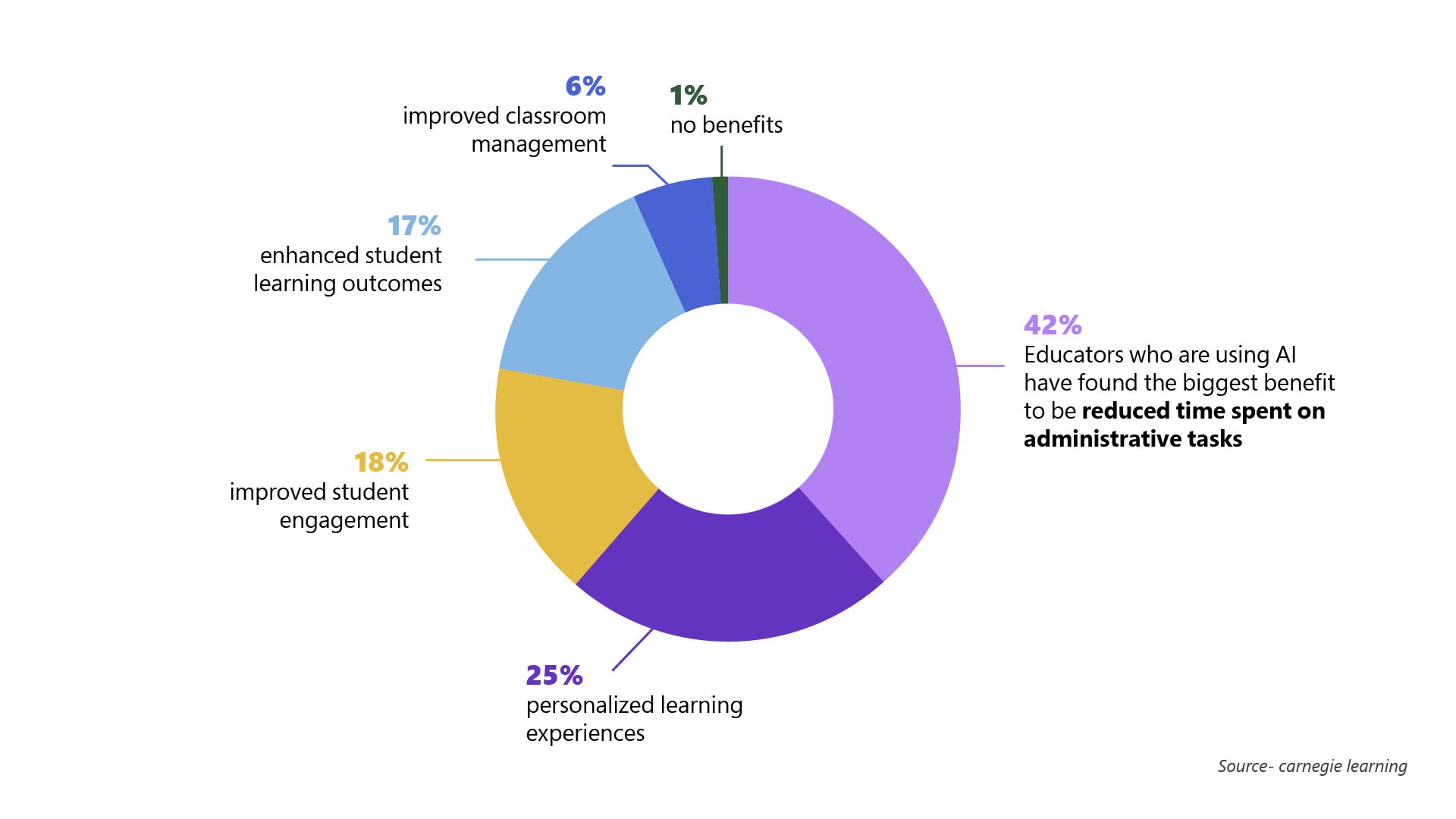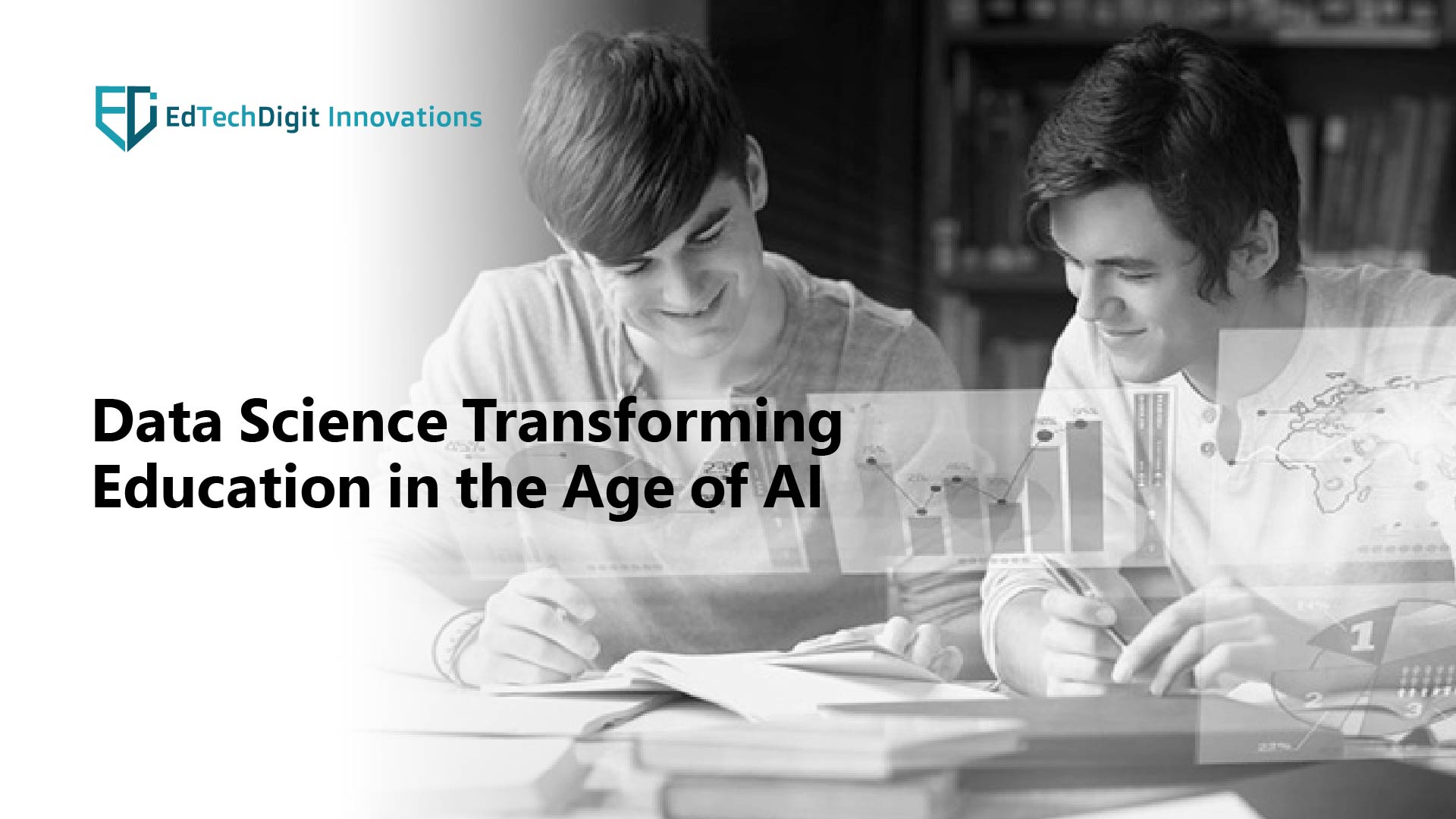The role of data science and AI can be significantly felt across all industries, including healthcare, finance, manufacturing, and entertainment. The same is with the education sector as well. Data science in education is offering an unmatched teaching and learning experience as well as operational efficiency.
If we talk about the benefits of using AI and data science in education, then Carnegie Learning’s ‘The State of AI in Education’ report highlights that 42% of educators who are using AI can found significant reduction time consumed in administrative tasks. Whereas 25% believe the biggest benefit is personalized education, followed by 18% who think it improves student engagement.

In this post, let us explore deeper and understand the role of data science in transforming education in the 21st century.
Role of Data Science in Education
Data science is an interdisciplinary field combining the expertise of mathematics and statistics, computer science, and domain knowledge to extract insights from various kinds of raw data.
Data science or AI in education has a huge role to look out for. The modern data science techniques, including machine learning and predictive analytics, are being used to transform every aspect of education, from teaching and learning to administration. In the following sections, we will explore their impact in detail.
Impact of Data Science in Education
Here are some of the notable benefits, or you can say, the transformative impact data science has on the K-12 education system.
-
Personalized Learning
Contrary to traditional teaching methods, using data science in education helps offer a more customized teaching and learning experience by leveraging data and metrics and adapting them according to individual students’ needs.
For example, today’s modern adaptive learning platforms come with advanced algorithms that can efficiently monitor student performance in real time, and through continuous analysis, they can adjust the difficulty level of the course content as required.
If a student is struggling with algebra, then the platform can slow the pace, provide easier explanations, and offer practical problems. And if the student is doing good in geometry, then it can introduce them to more complex problems so that the student doesn’t get bored and engages properly.
-
Predictive Analytics
This data science technique is truly transformative as it helps educators to identify students’ strengths and weakness properly. There are efficient tools like IBM Watson Education that can analyze huge amounts of data such as test results, assignment completion, etc., and forecast academic outcomes.
These insights can help educators to intervene promptly and offer required support before students fall behind. Georgia State University is a great example that successfully reduced its dropout rate using predictive analytics to identify students at risk in time.
-
Multifaceted Learning
Whether you want a lesson in text, video, or audio, data science supports all kinds of learning preferences and helps students learn content that suits them the best. Listening, reading, or watching, engage with the contents as you like.
Several learning platforms leverage behavioral data to recommend personalized learning materials such as interactive exercises, video lessons, infographics, or in-depth readings. This ensures students can easily connect with content in the most effective way for them.
-
Support for Diverse Learners
Predictive and adaptive technologies can be very beneficial, especially for students with diverse learning needs or disabilities. For example, Microsoft’s Seeing AI app uses data science techniques and machine learning algorithms to read printed text aloud and help visually impaired students.
Apart from this, tools like Grammarly and Texthelp are beneficial for students with dyslexia to help them read and write. Google's Live Transcribe and Google Translate are other helpful tools for students.
-
Improving Administrative Efficiency
Data science in education can also help tremendously improve the administrative process. Institutes can use AI in education to automate repetitive and time taking tasks like timetable creation and also optimize schedules according to the availability of teacher and resources.
Admission systems can automate student enrollment and even assess qualifications. Moreover, attendance tracking systems can also identify students at risk. These advanced tools make administration easy. Not just that, AI-powered chatbots can assist with student queries, reminders, and more.
Online Education Platform Overview
As per research conducted by Oxford Learning, the online learning market in the education industry has been growing at an unprecedented rate of 900% since the year 200.
Also, the Research Institute of America says that eLearning helps to increase retention rates, which have gone up to 60% from 25%.
These numbers indicate how e-learning is growing and how students have more control over the learning process.
Conclusion
The role of technology in education is increasing day by day. With the growth in techniques in data science and AI, the applications of these technologies in education are becoming more prominent and significant.
Not just enhancing learning and teaching experience, they are also effective in improving the administrative process and their efficiency.
Therefore, educators must thoroughly analyze areas where they can implement advanced data science and AI solutions, find the right edtech solutions, and implement them properly for better education, engagement, and administration.

